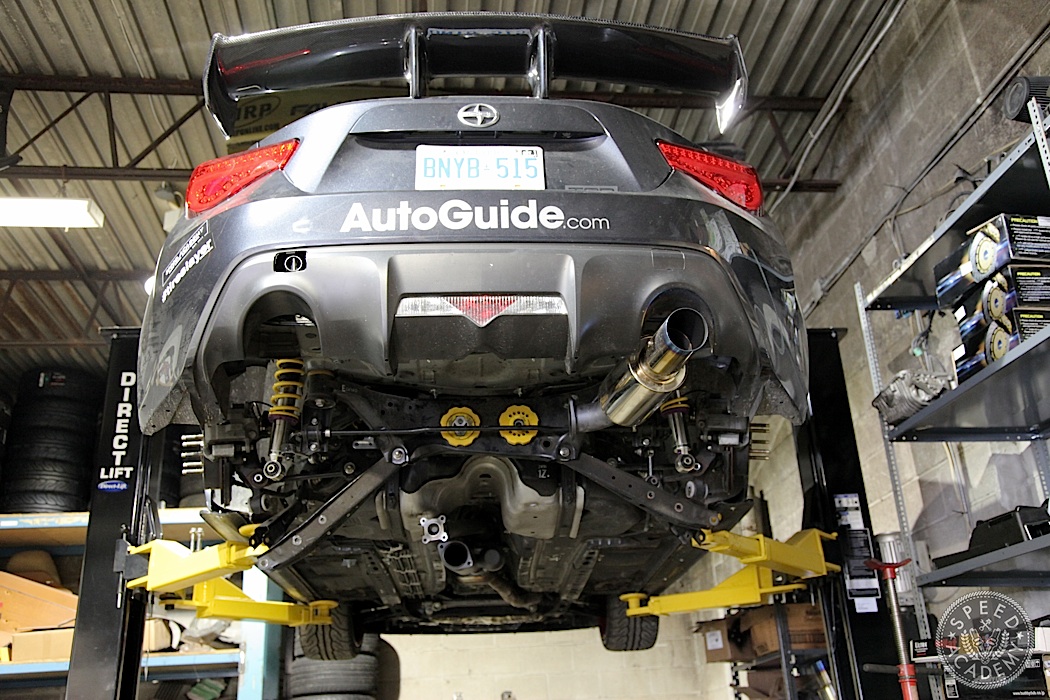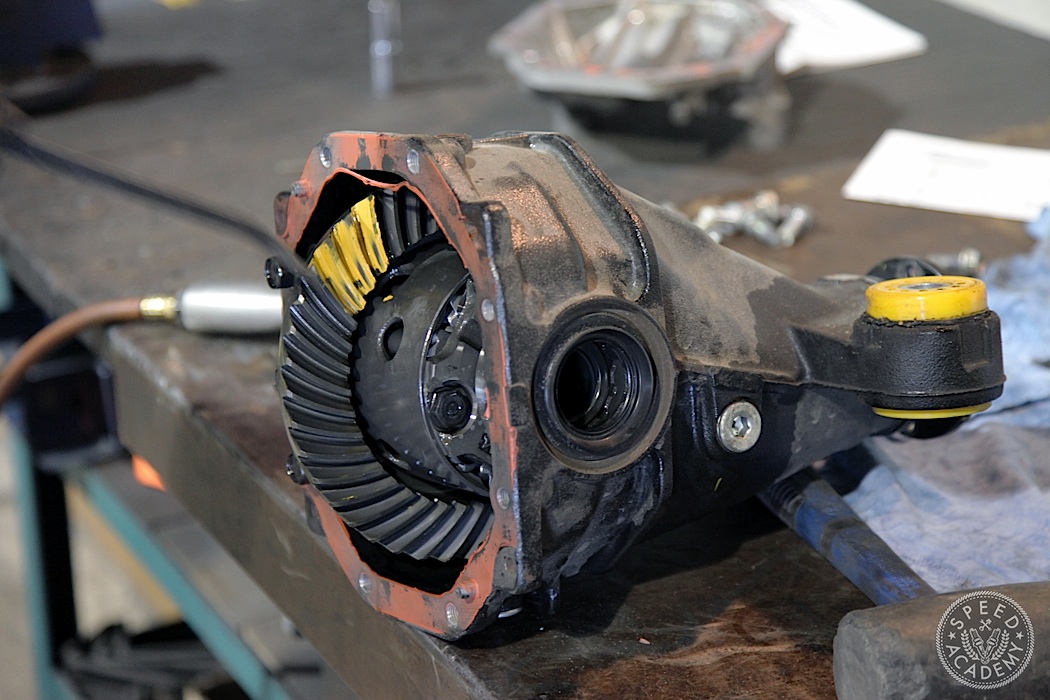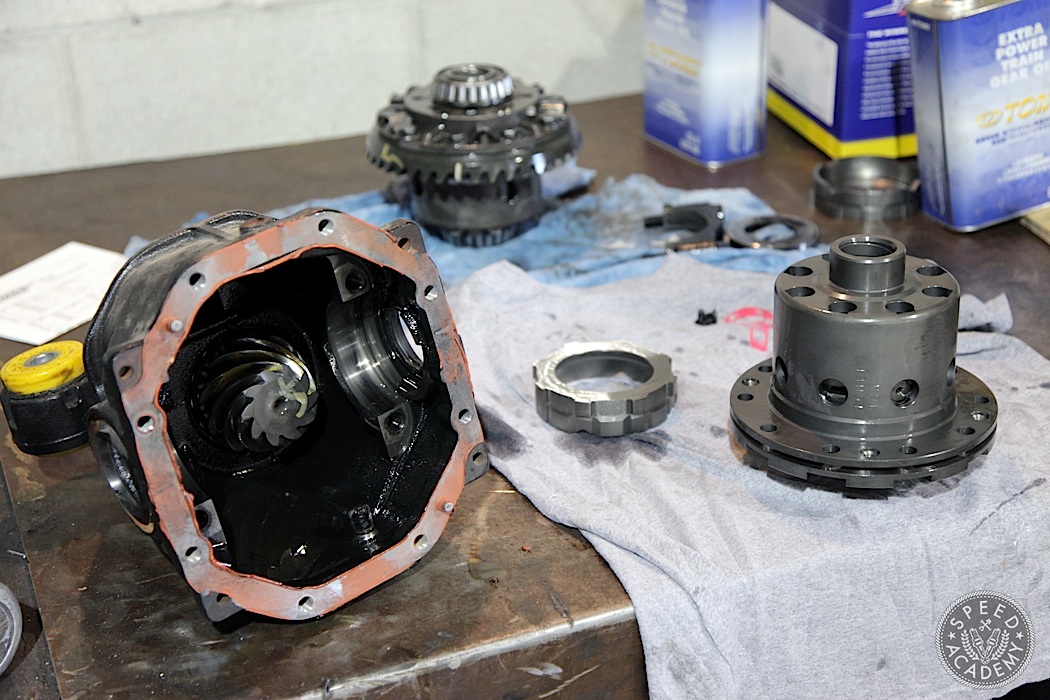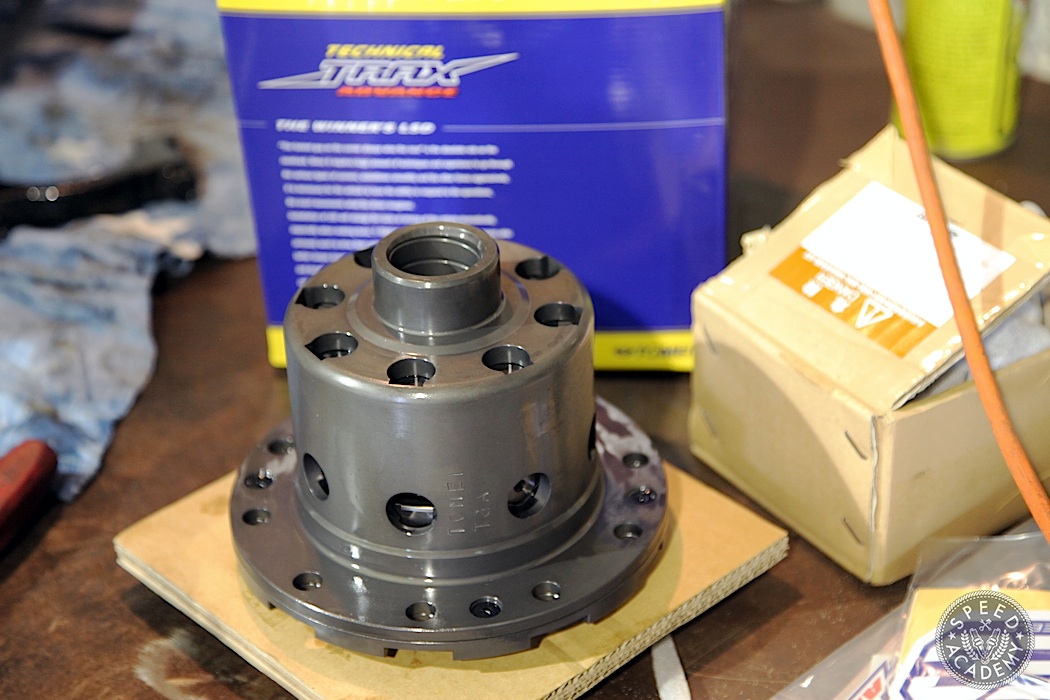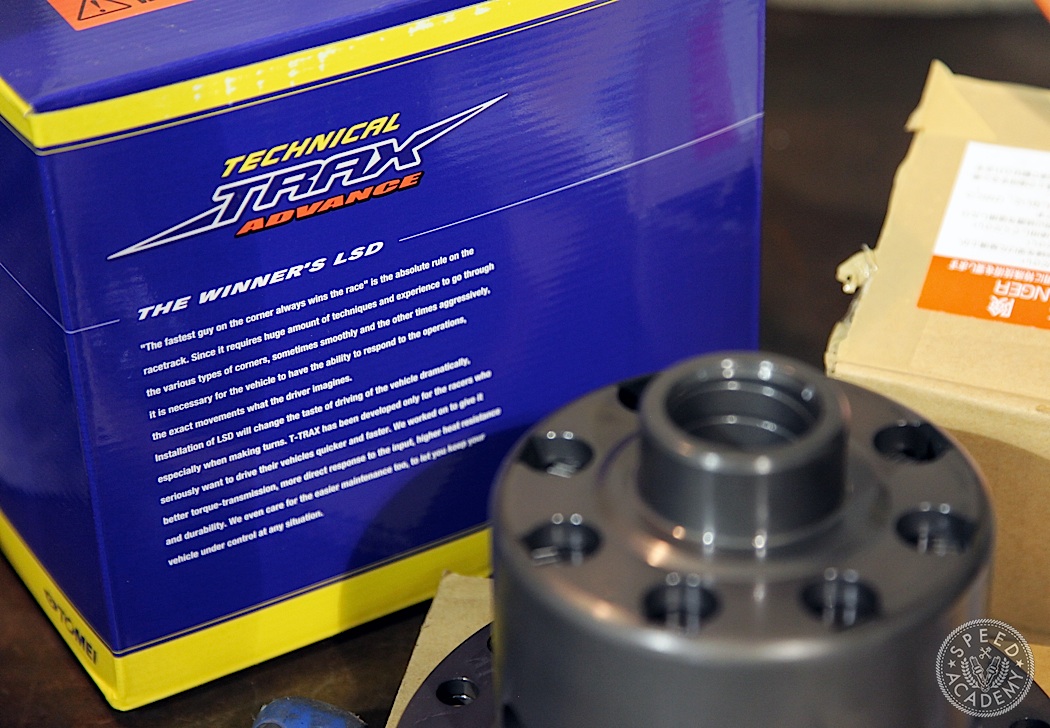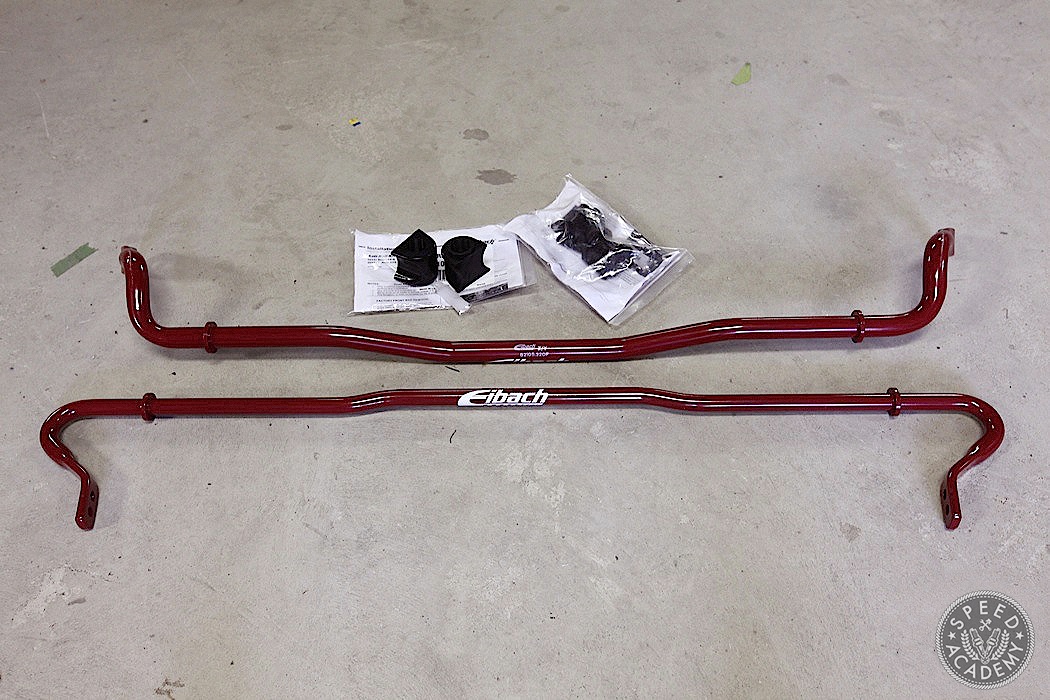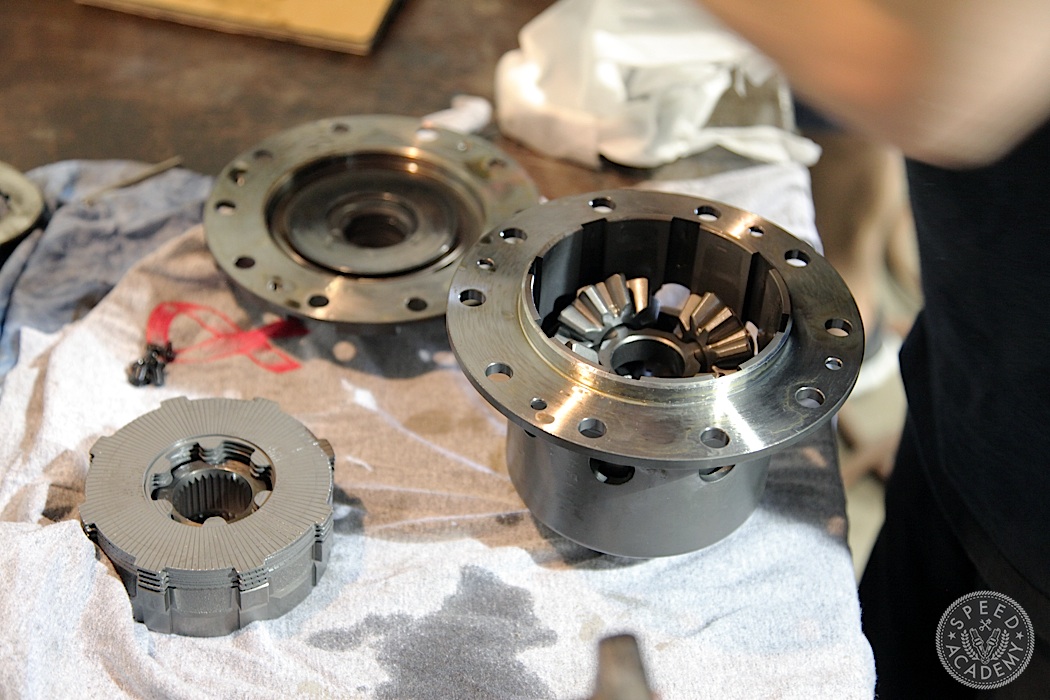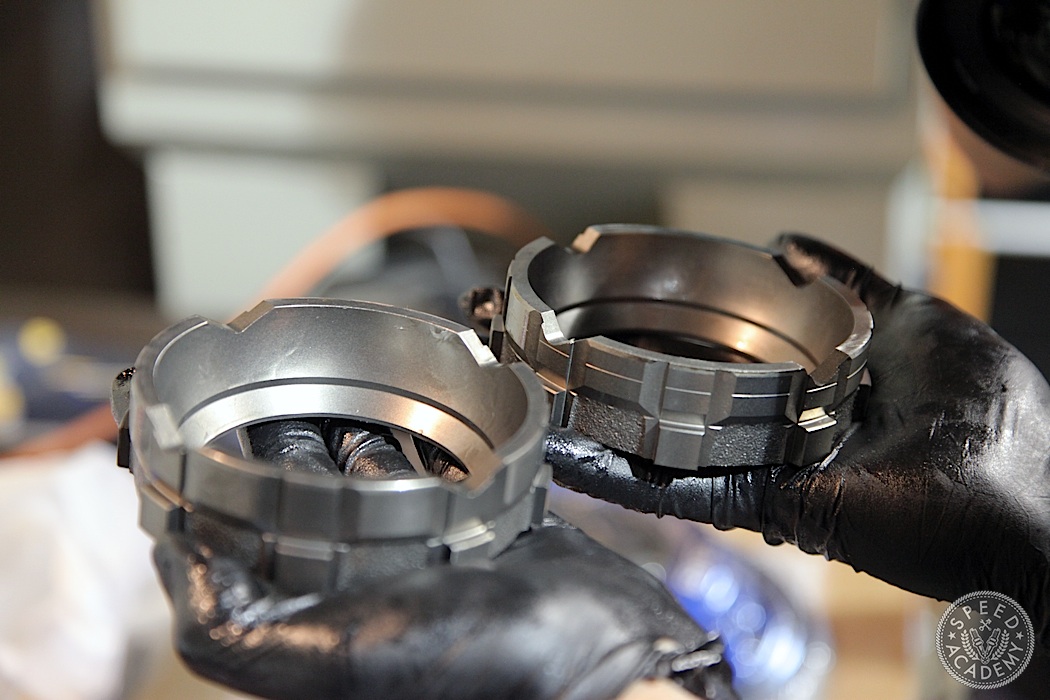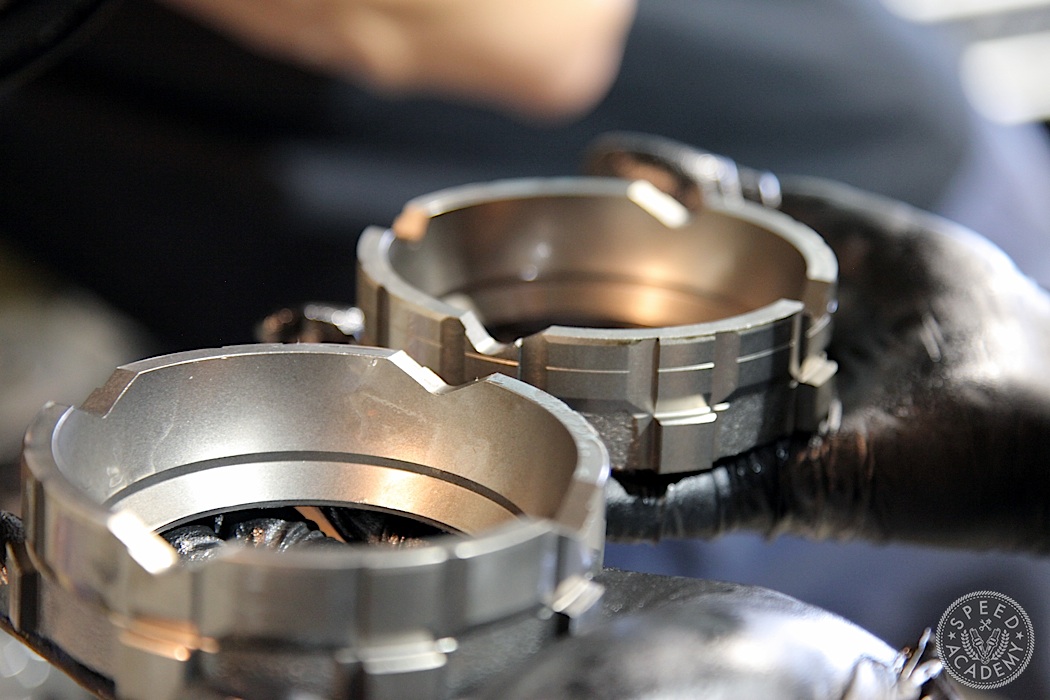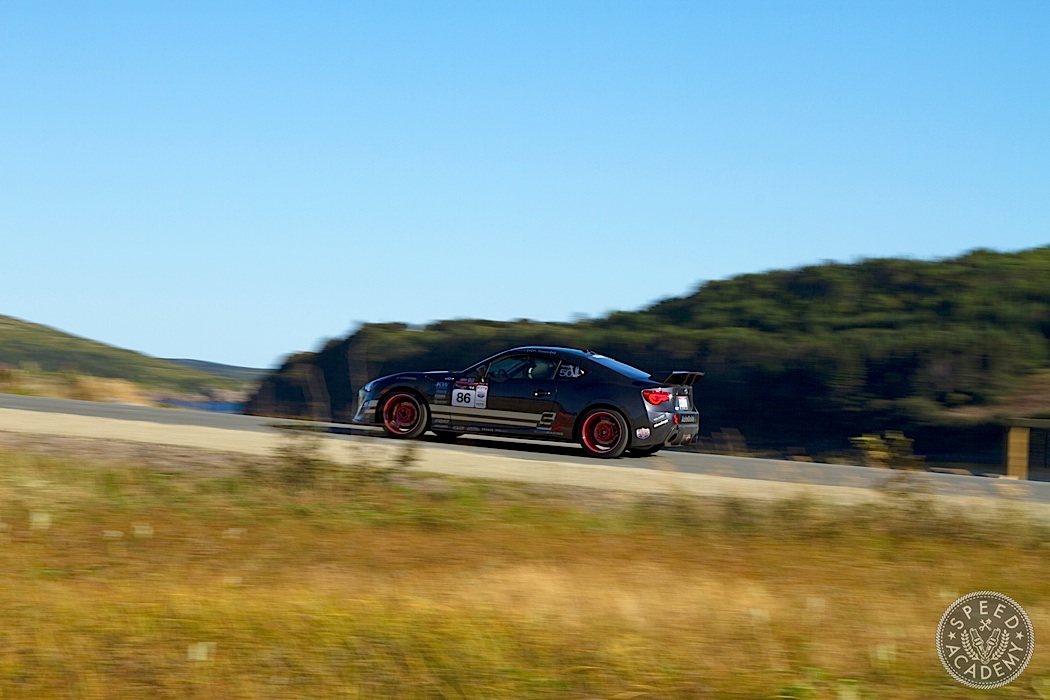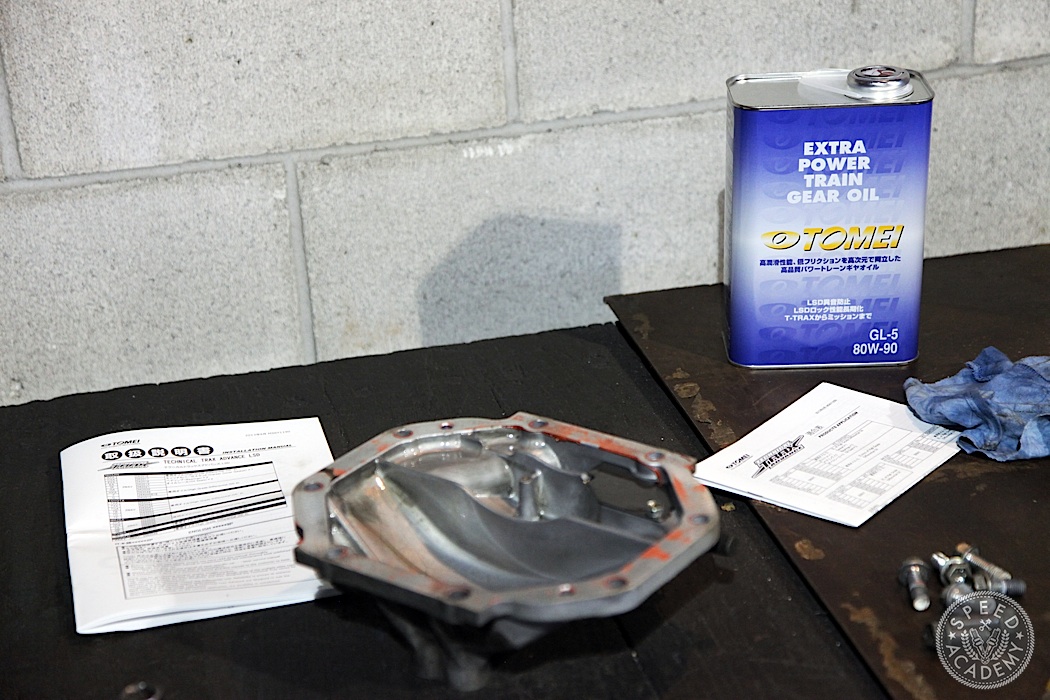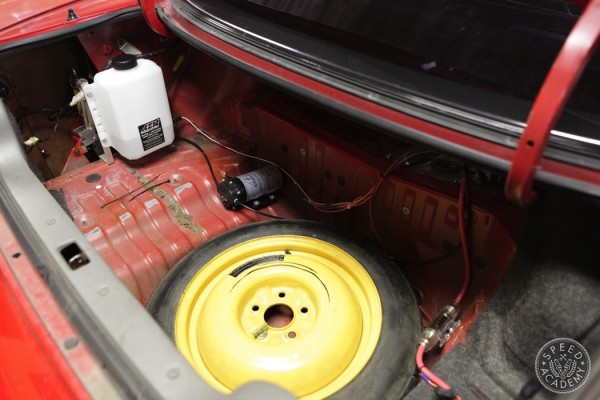Removing the rear differential housing was actually a bigger job than removing the transmission, and that’s because you’ve got to pull the axles, which means disconnecting the lower control arms so the hubs have enough play for the axles to pop out. Plus you’ve got to unbolt the prop shaft and pull the big bolts that connect the diff to the subframe and chassis, where the Whiteline subframe and diff bushings are doing their thing (taking some slop out of the driveline and thus allowing power to be sent to the rear tires more directly). So pretty much just unbolt everything on the rear end. No big deal.
I honestly thought the factory LSD was broken, based on our first test day in the car at Toronto Motorsports Park. It was locking and unlocking rapidly and unpredictably in the corners, making it nearly impossible to put the power down. I’ve never felt a Torsen gear-type differential do this before, but when we popped the diff housing open at Pat’s shop there was no sign of any chewed, stripped or otherwise fubared gears. So our best guess is that the diff was acting crazy because the rear sway bar wasn’t hooked up (it was missing an end link bolt and there was no front bar on the car yet, so we thought it wise to leave the rear bar disconnected so front/rear roll stiffness was consistent), which allowed the inside rear tire to be unweighted enough for the diff to go coo coo for coco puffs.
The problem with this theory is that I’ve run with no rear bar on my RX-8, which also has a Torsen LSD, and it always functioned perfectly. So who knows. In any case, we decided to permanently solve the problem and upgrade diff lockup and tune ability in the process by having Pat install a Tomei Technical Trax Advance clutch-type LSD, plus we added Eibach’s anti-roll kit, consisting of matched front and rear anti-roll bars (we’ll cover these in more detail later).
The Tomei diff comes assembled as a 2-way limited slip, meaning it tries equally hard to transfer torque to the tire with the most grip under both acceleration and deceleration. This is an ideal setup for drifting since having aggressive diff lockup while braking makes it easy to put the car into a nice controlled drift, but for road racing or an event like Targa where you don’t really want to be hanging the tail end out while trail-braking, a 1.5-way setup is the way to go.
Tomei clearly understands this, since they include a set of 1.5-way pressure rings with this diff kit. As you can see from the comparison picture, the 1.5-way rings have a gentler slope on the deceleration side, which means you’re getting milder lockup while braking. This means a more stable rear end when slowing aggressively, but still enough decel lockup to encourage the rear axle to follow the front once turn-in is initiated.
During our initial track test of this setup I will say that I found lockup to be a bit more aggressive than expected. I guess I was just used to the milder OEM Torsen diff’s characteristics, but with the Tomei diff I found the car wanted to oversteer more aggressively once I transitioned back onto the gas. Peter didn’t seem to have the same difficulties I did, though, so I suspect part of it is just the billions of hours I’ve spent track driving FR-S’s with the OE diff that it weirded me out to have the more aggressive torque transfer of the Tomei unit back there.
At Targa the Tomei diff worked perfectly, though. In the tight town stages we could really put the power down aggressively and it helped the car rotate in the hairpins. And out on the higher speed stages the car was very stable when getting back on the gas. And now that we’re back from Newfoundland, we also have the option to fine-tune the diff’s lockup characteristics by removing some of the friction discs from the clutch pack. This makes the Tomei Technical Trax Advance truly live up to its name.
The only downside to this, or any other clutch-type differential, is that they can be a bit noisy, plus they lockup and make the rear end hop a bit during very tight and very slow turns, say when pulling in or out of a parking spot. But if you can live with the hardcore nature of a clutch-type LSD, we’re certainly very impressed by both the adjustability and the ruggedness of the Tomei unit. Just make sure you follow the painstaking break-in procedure (30-minutes of figure-8’s followed by 100-km of cruising at 60 km/h), use Tomei’s differential oil, and you should get a lot of longevity out of it.
